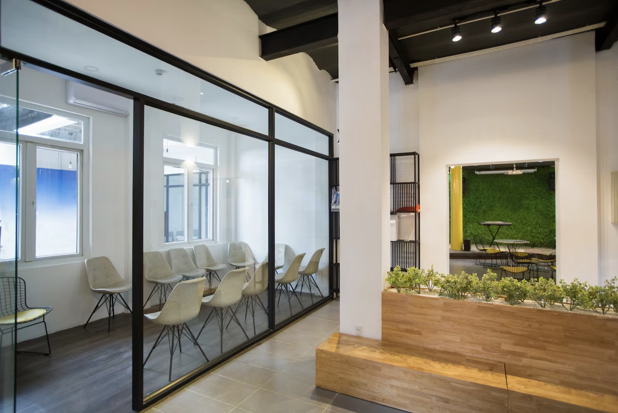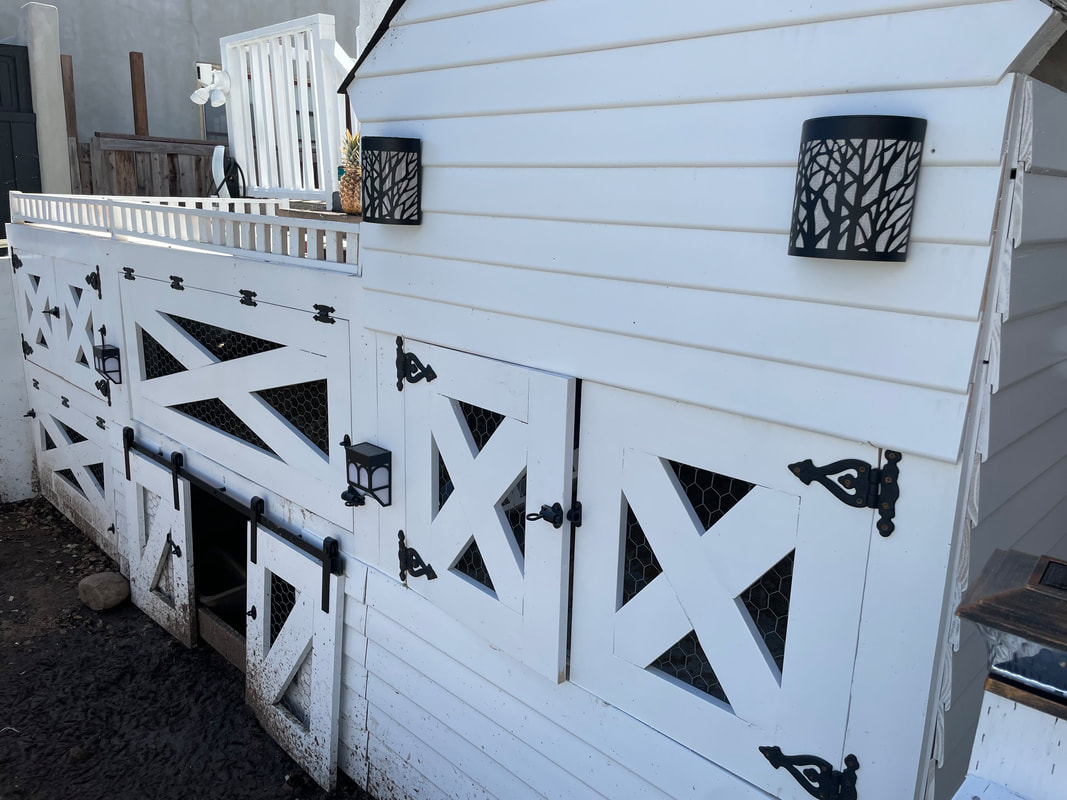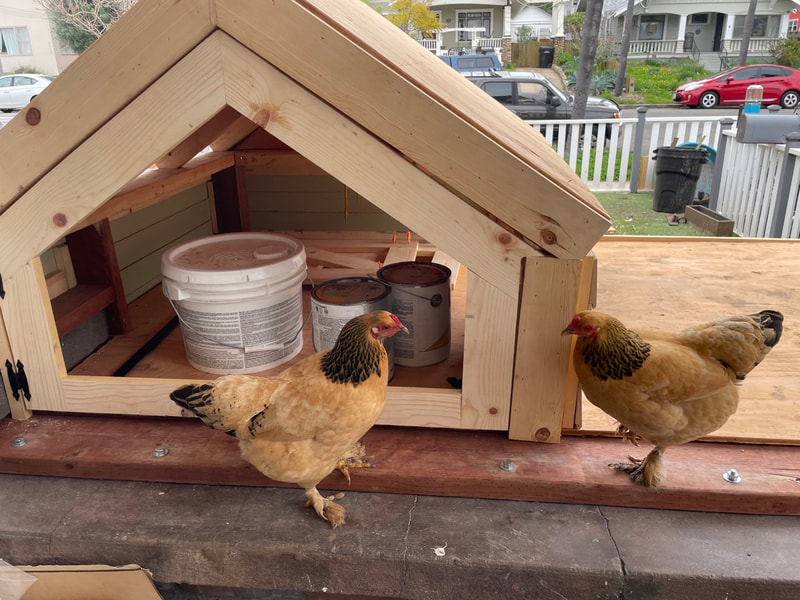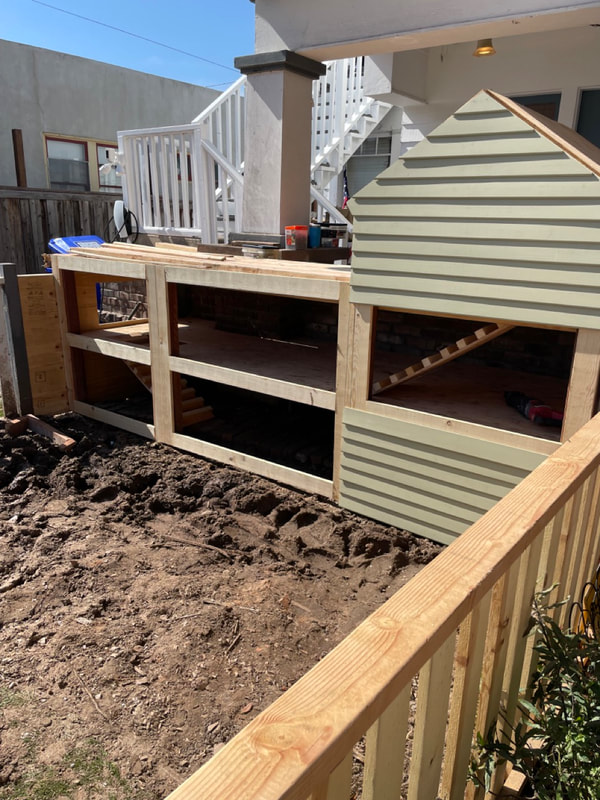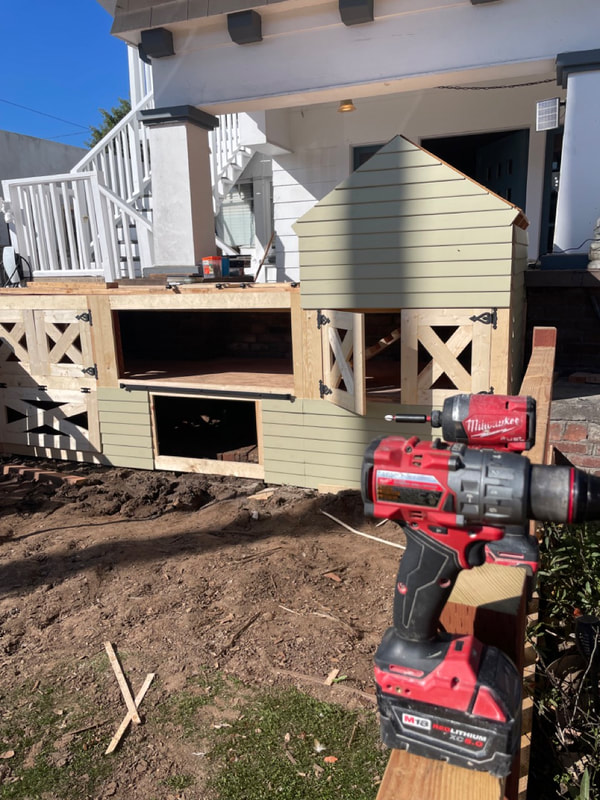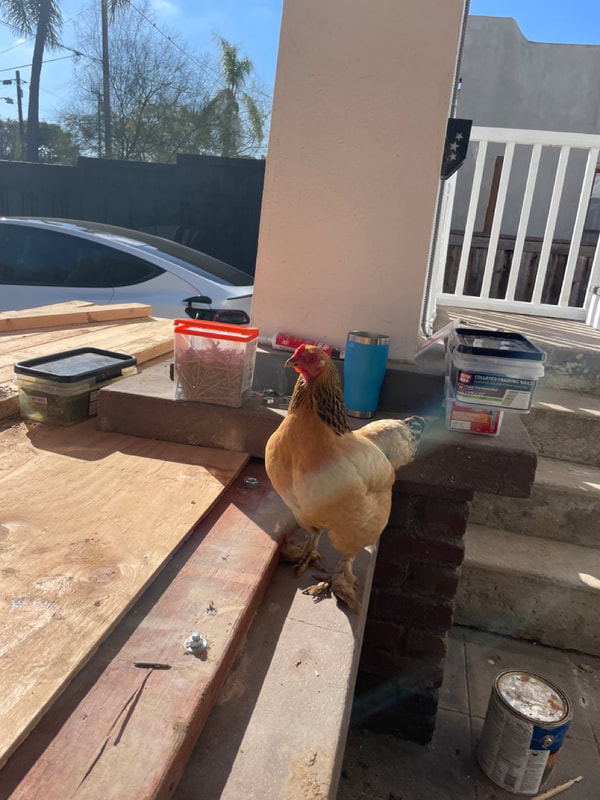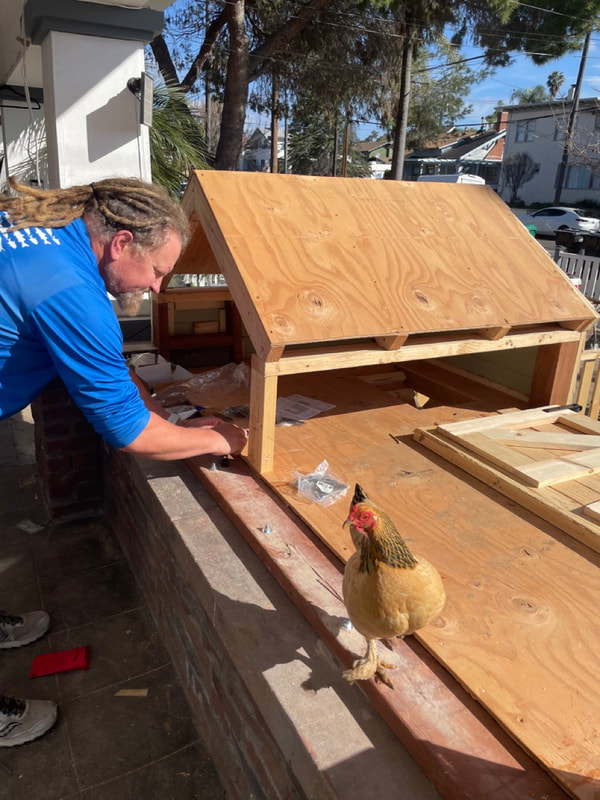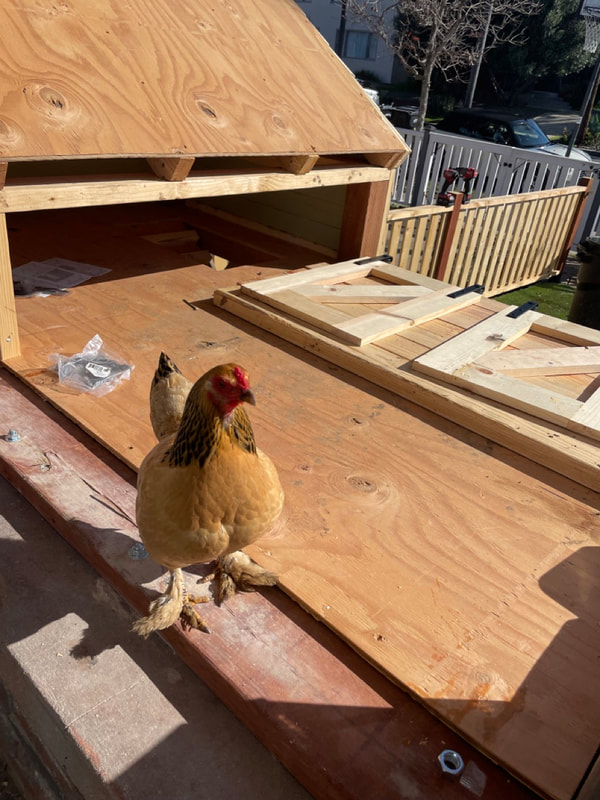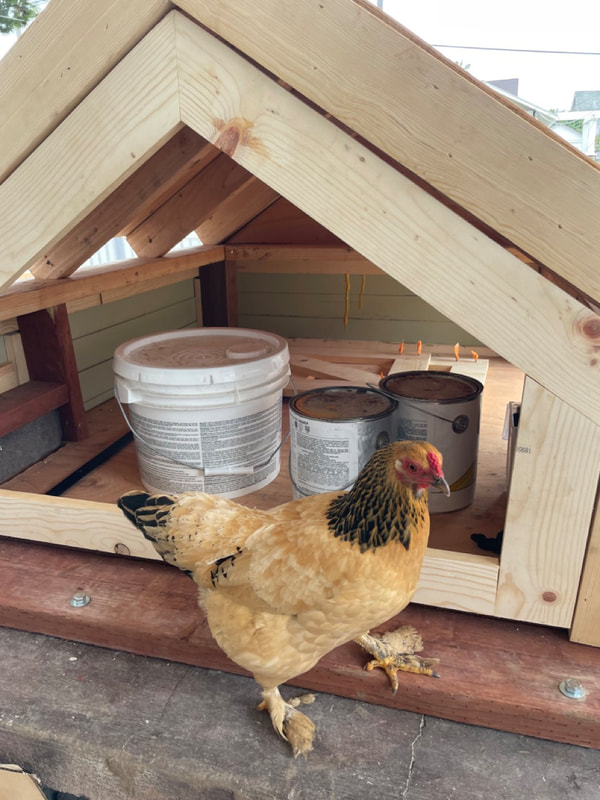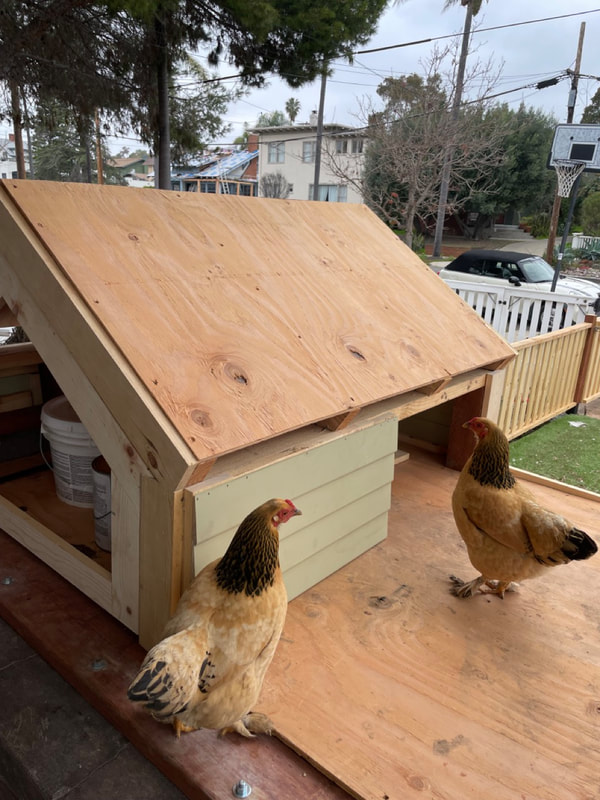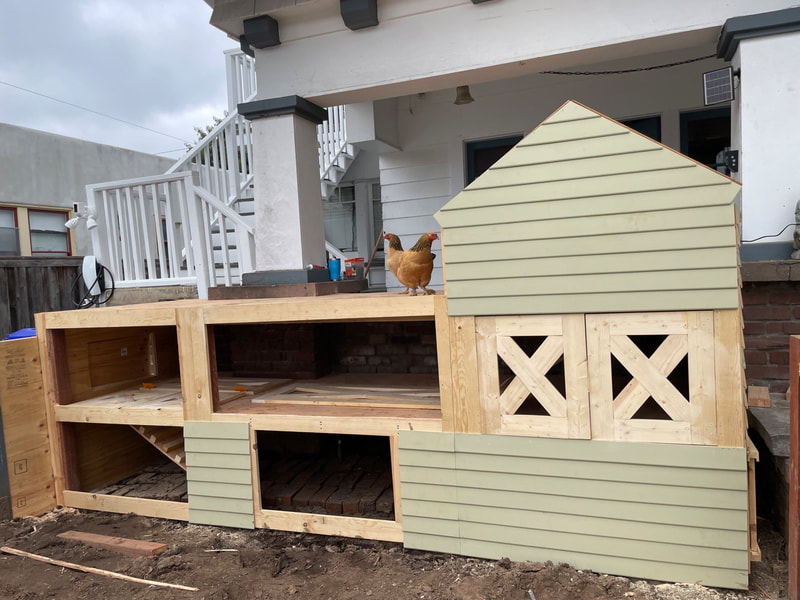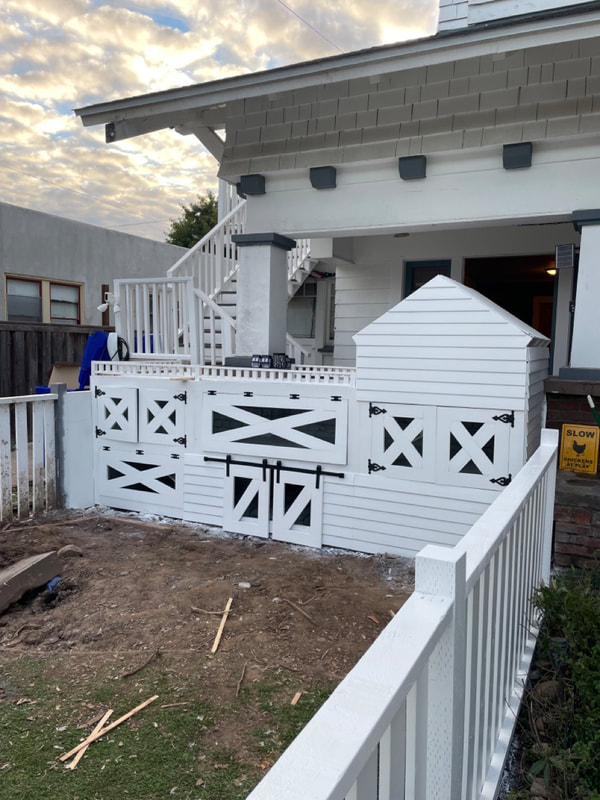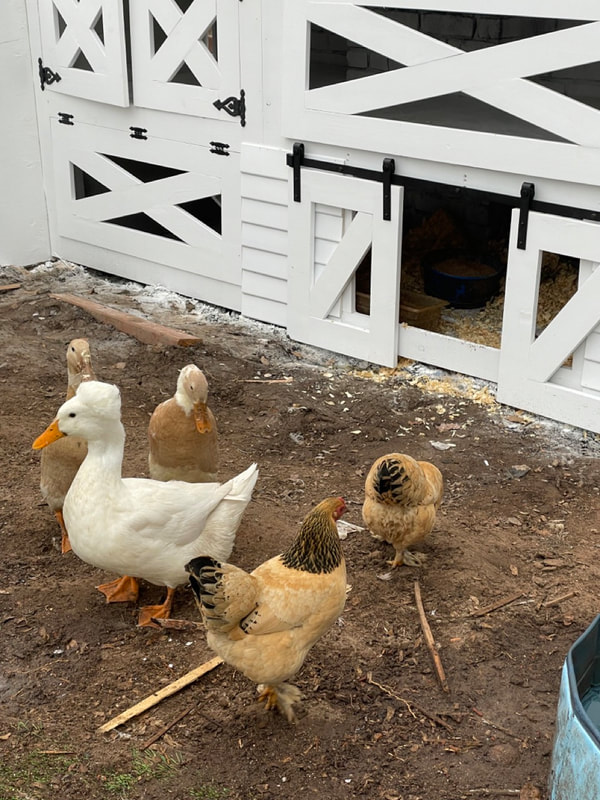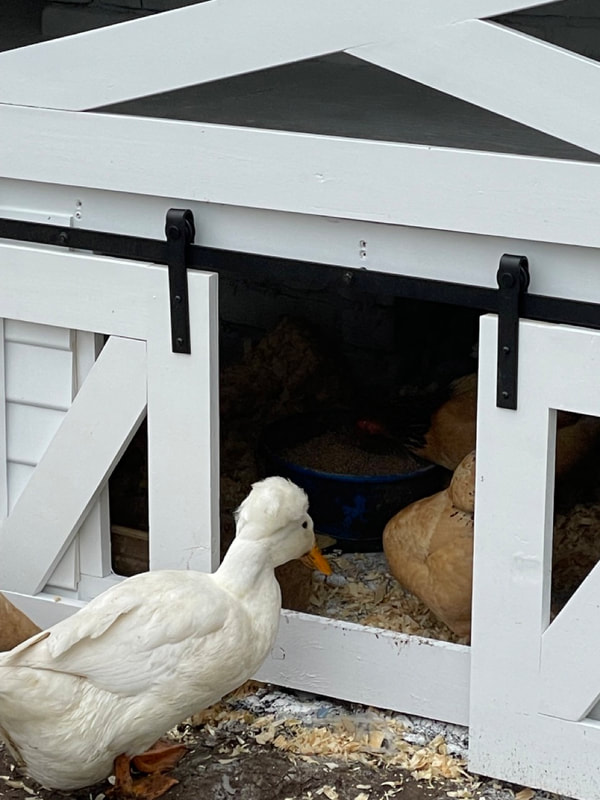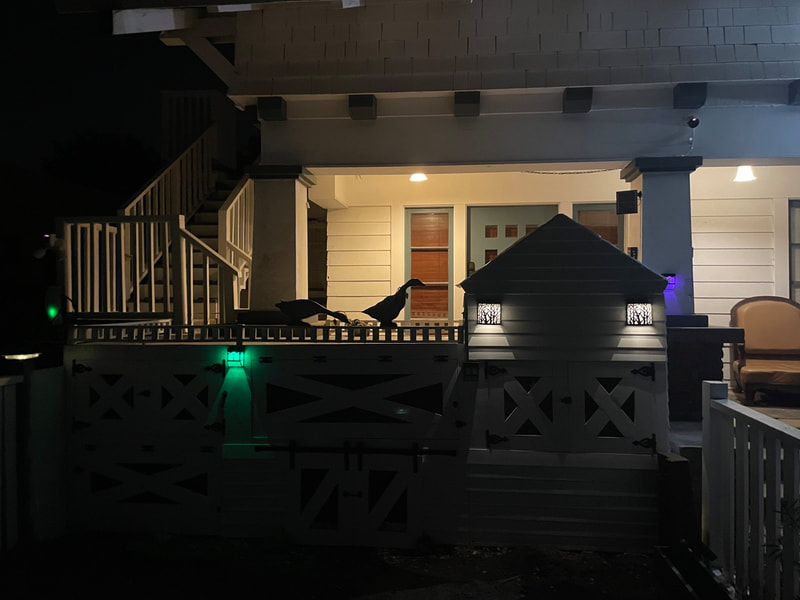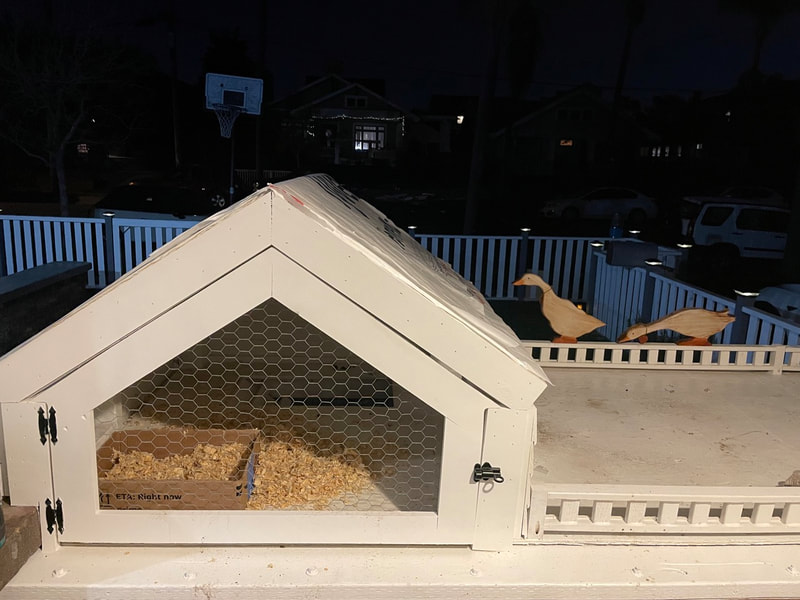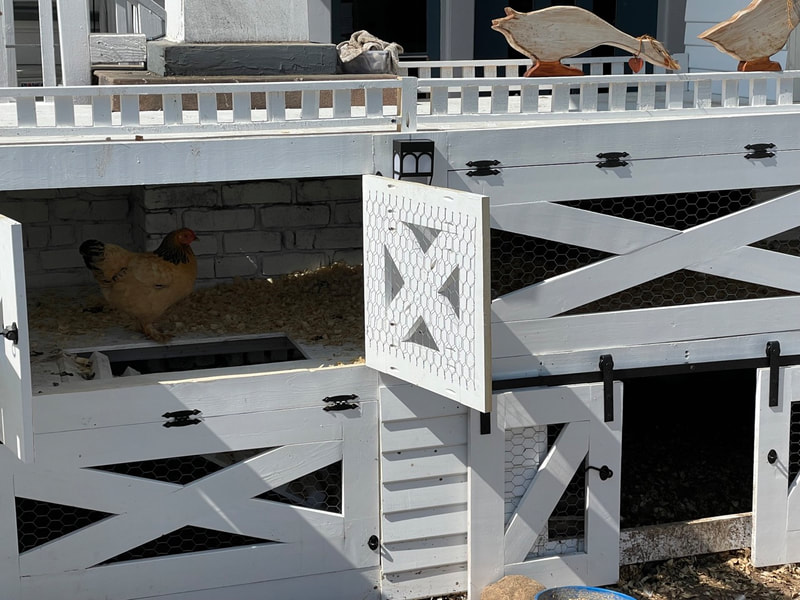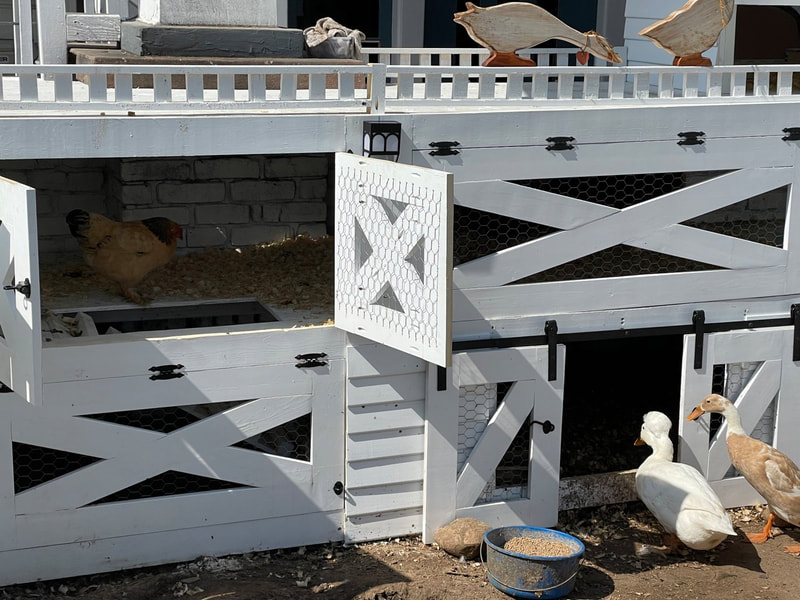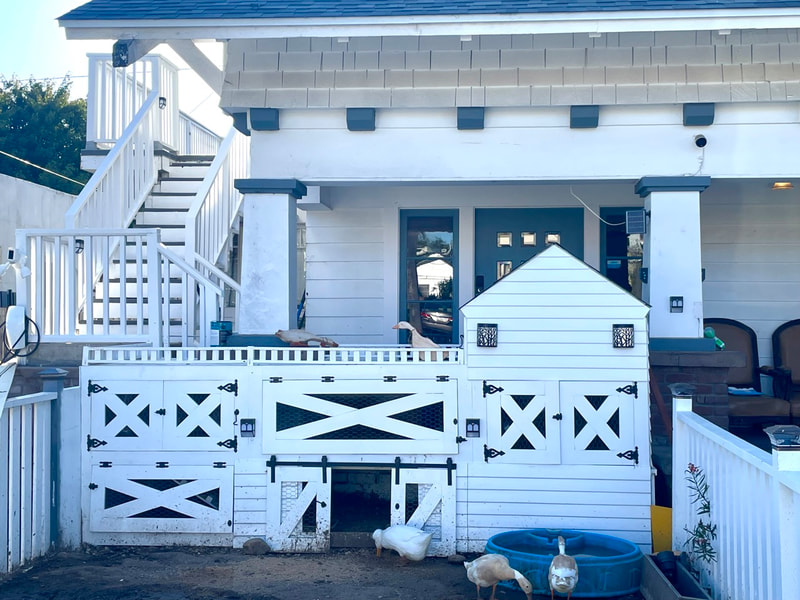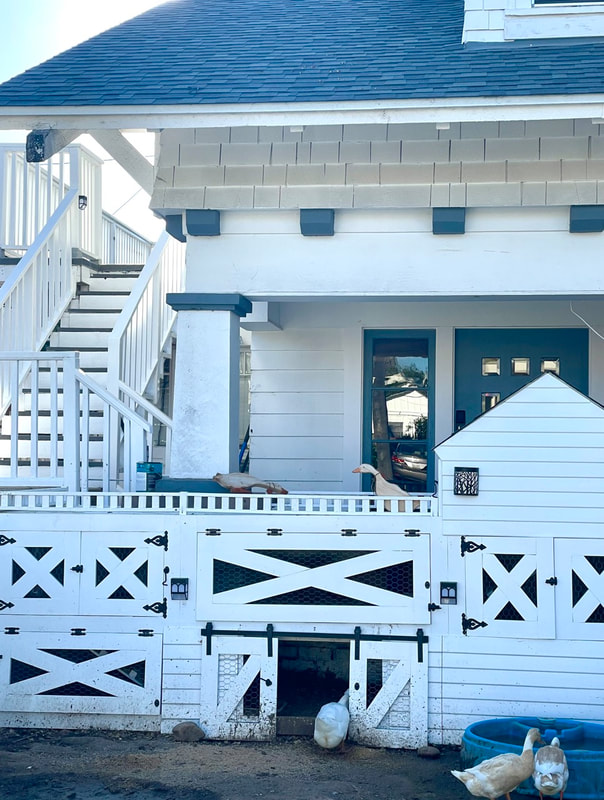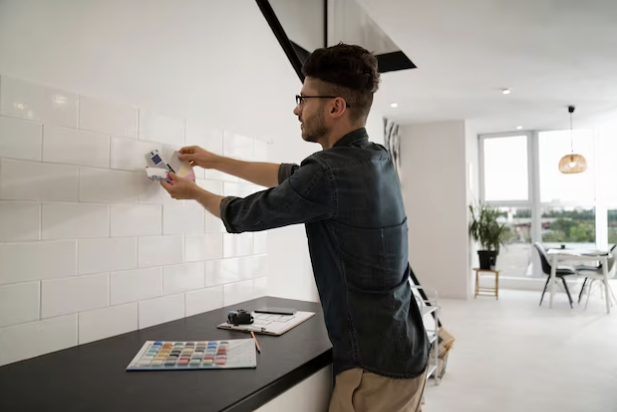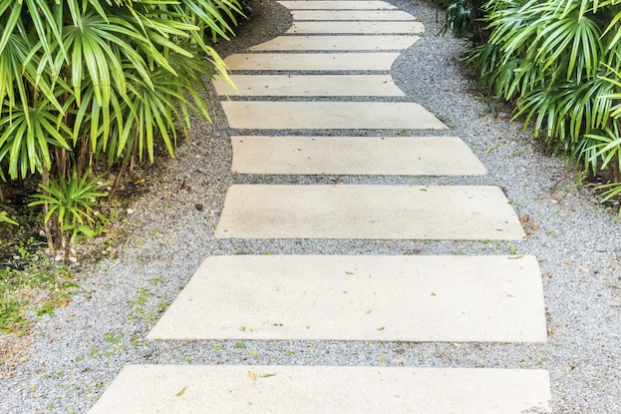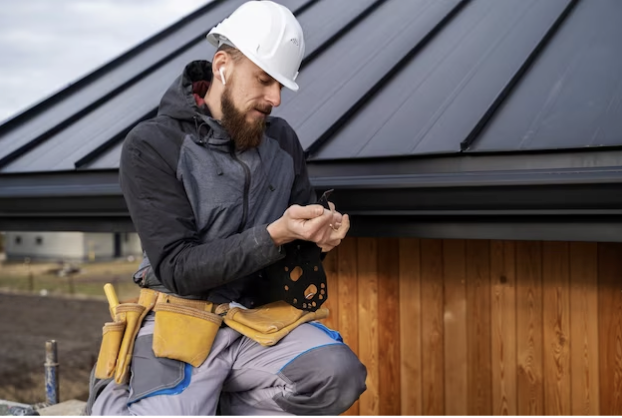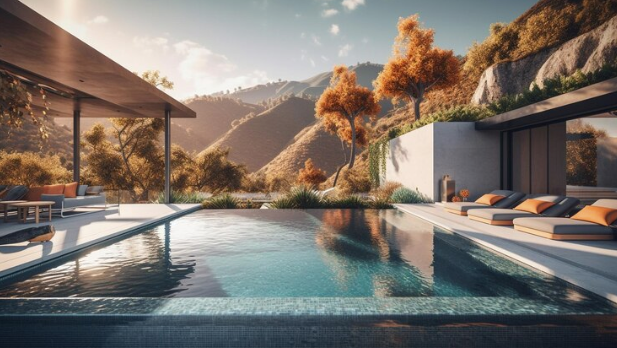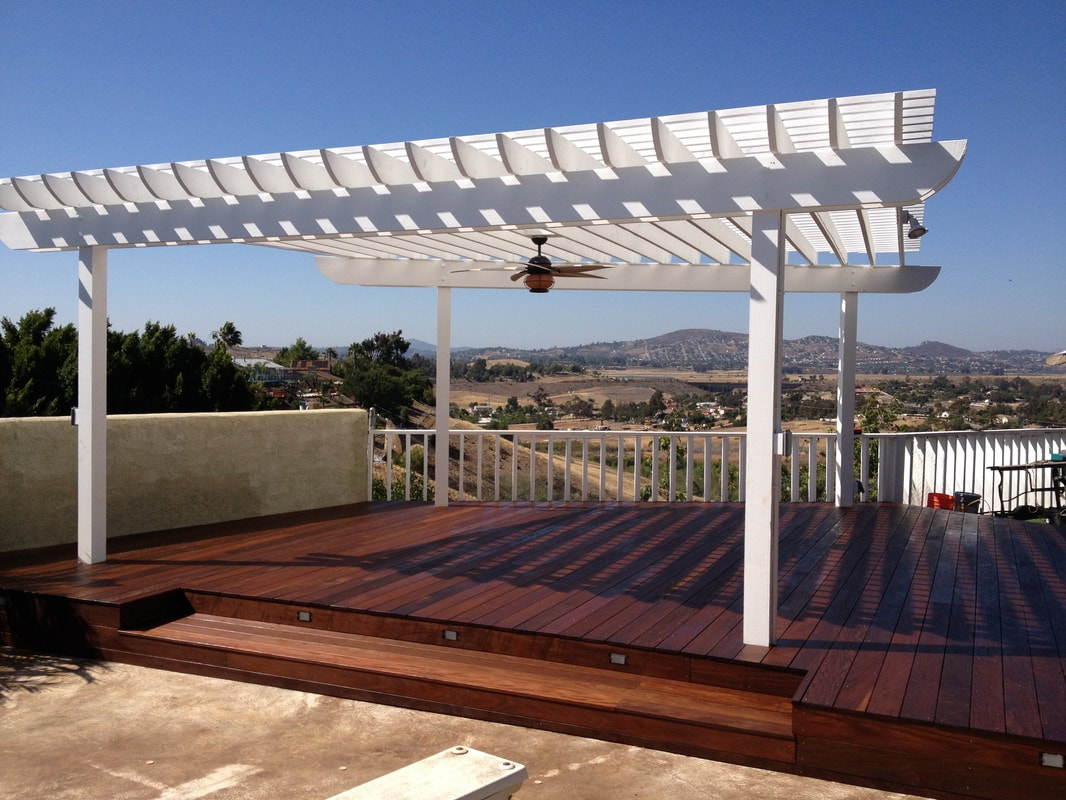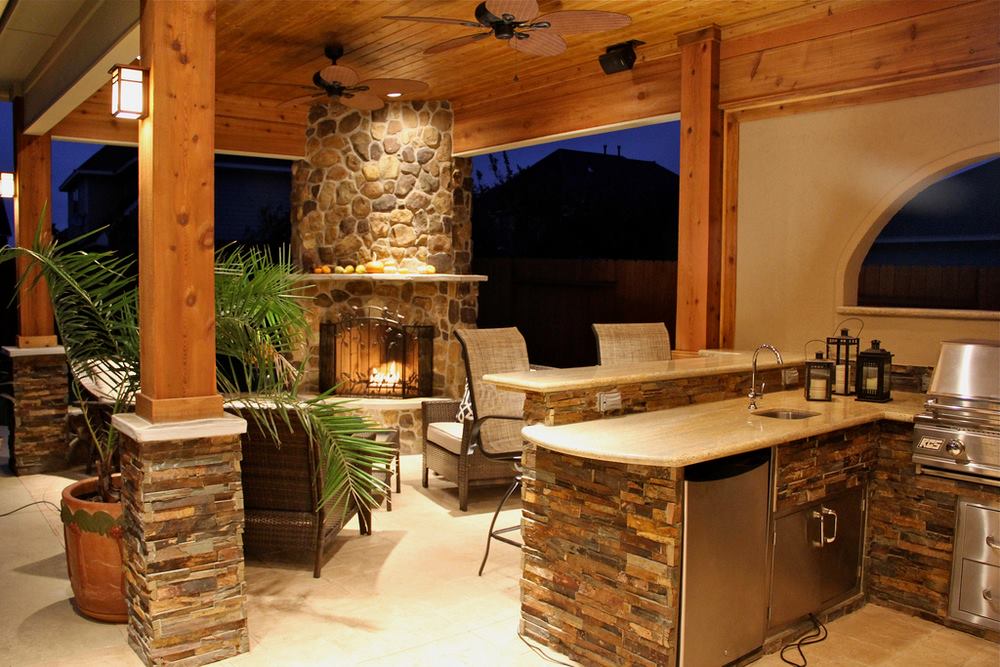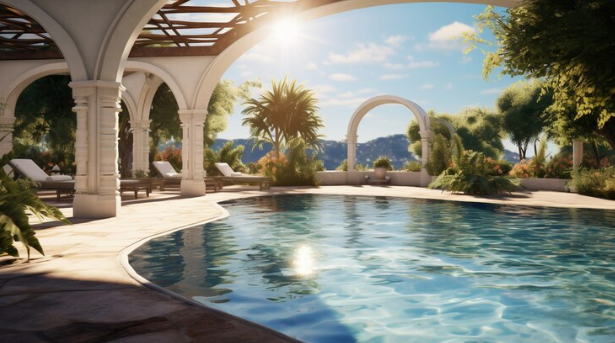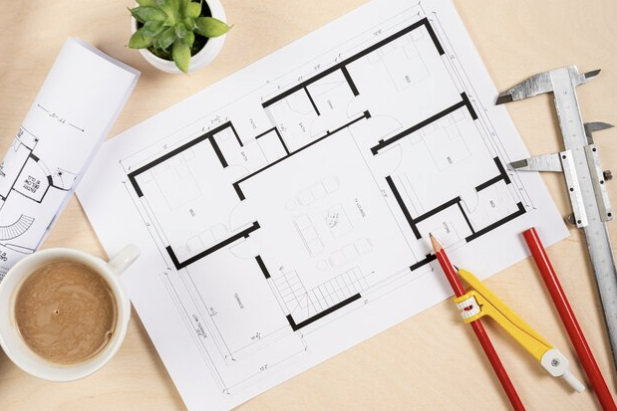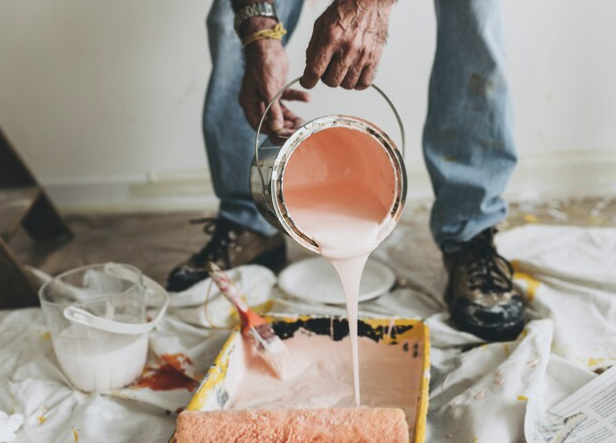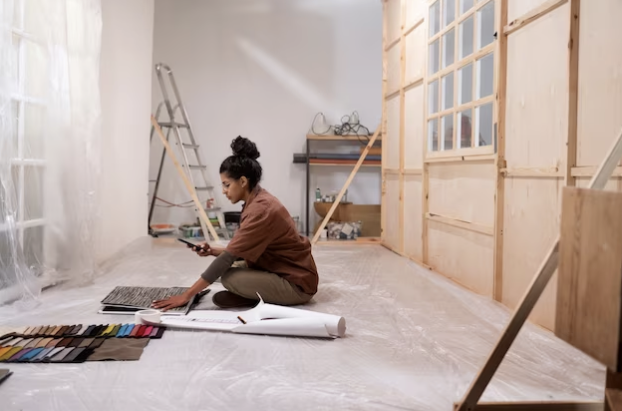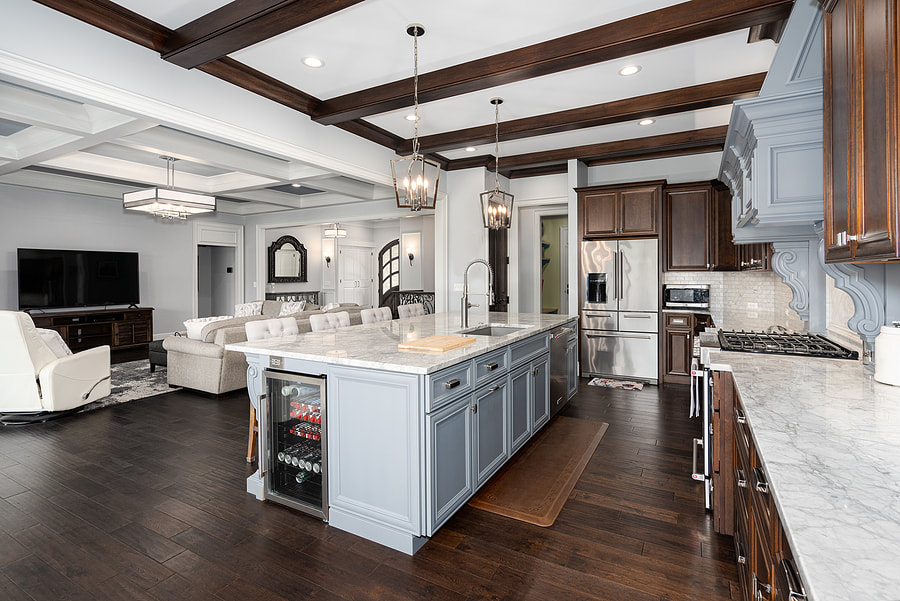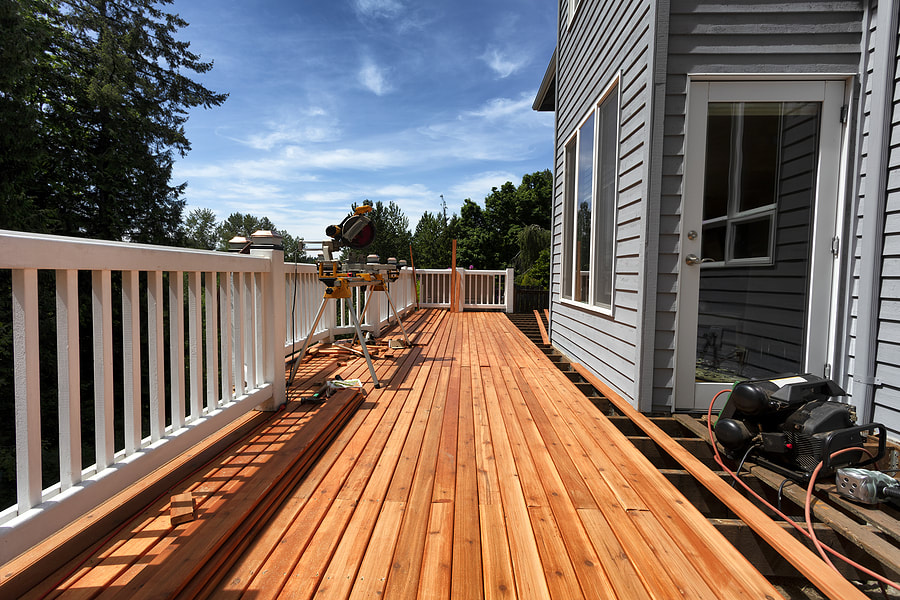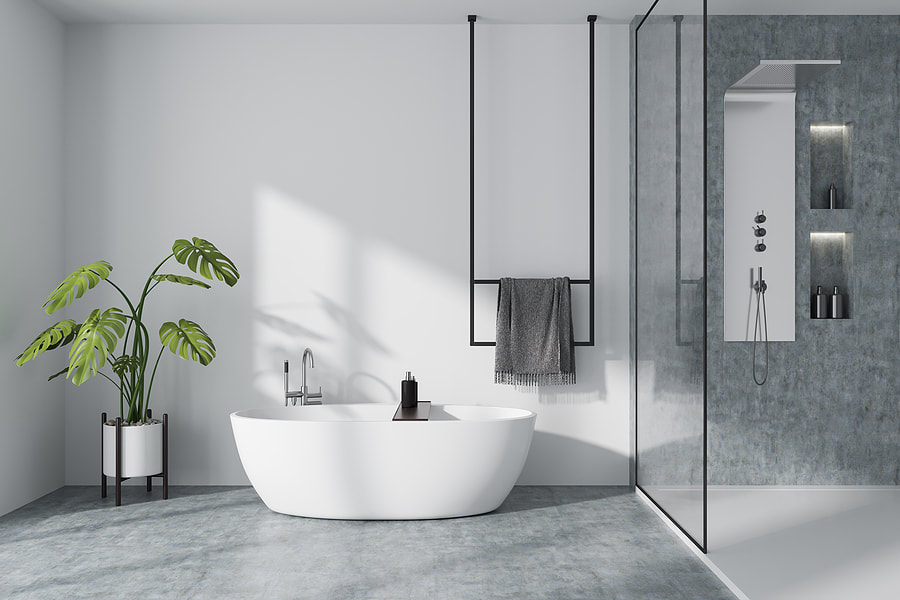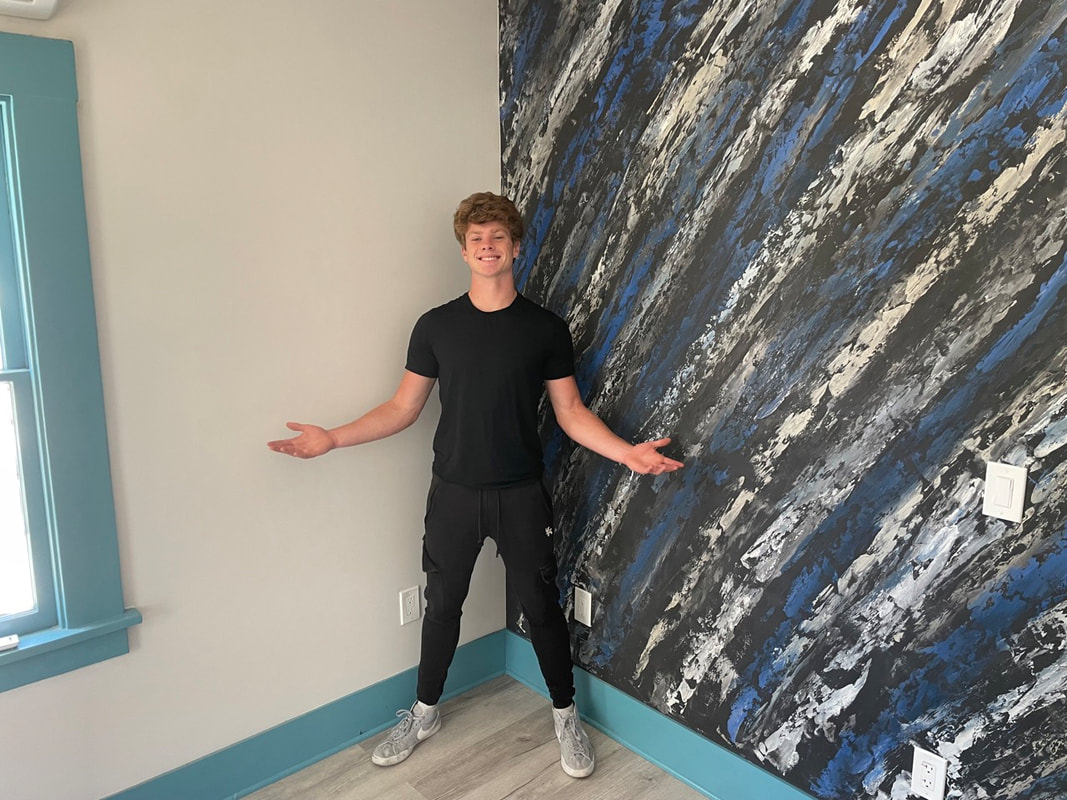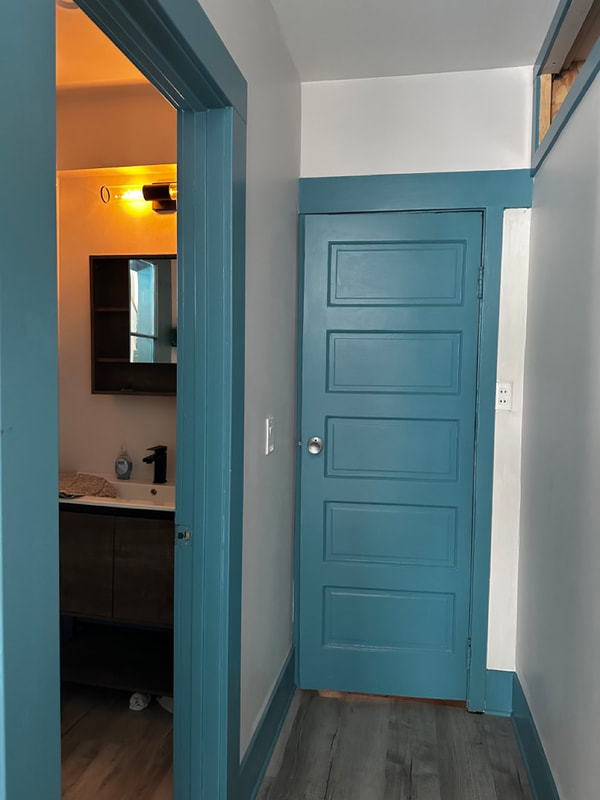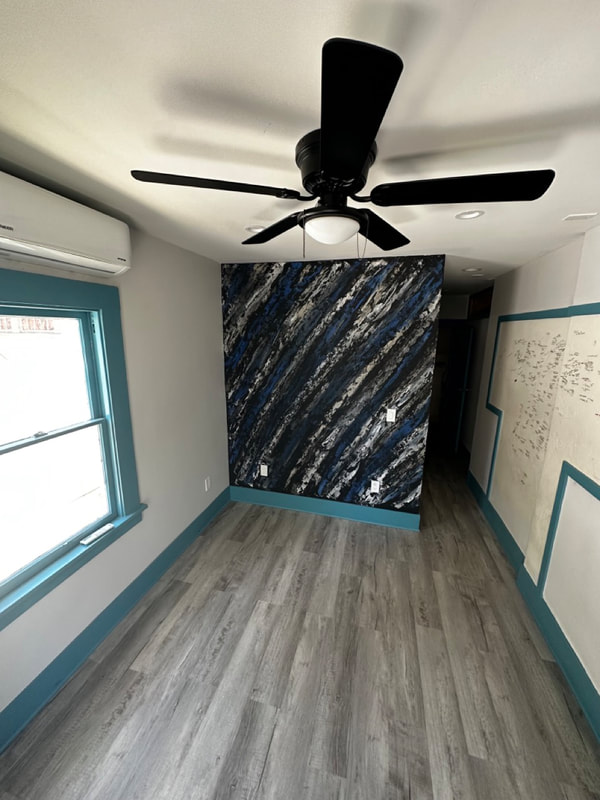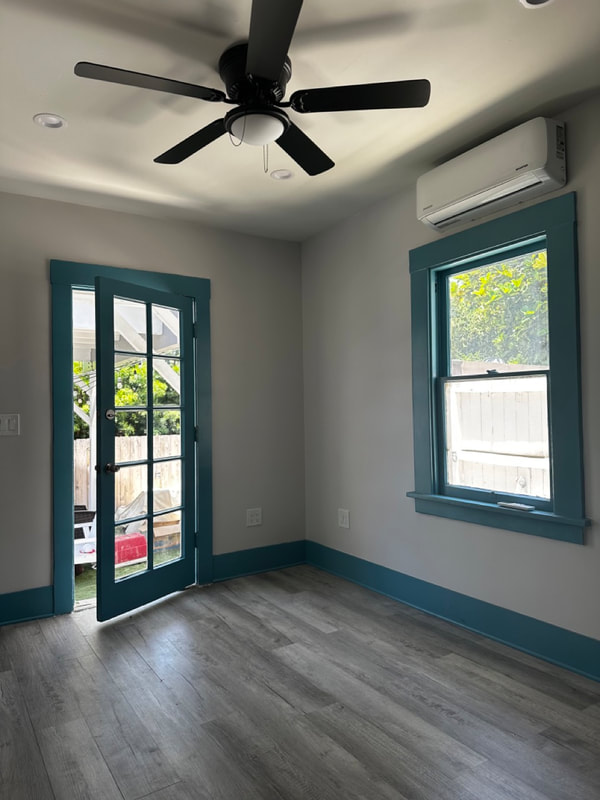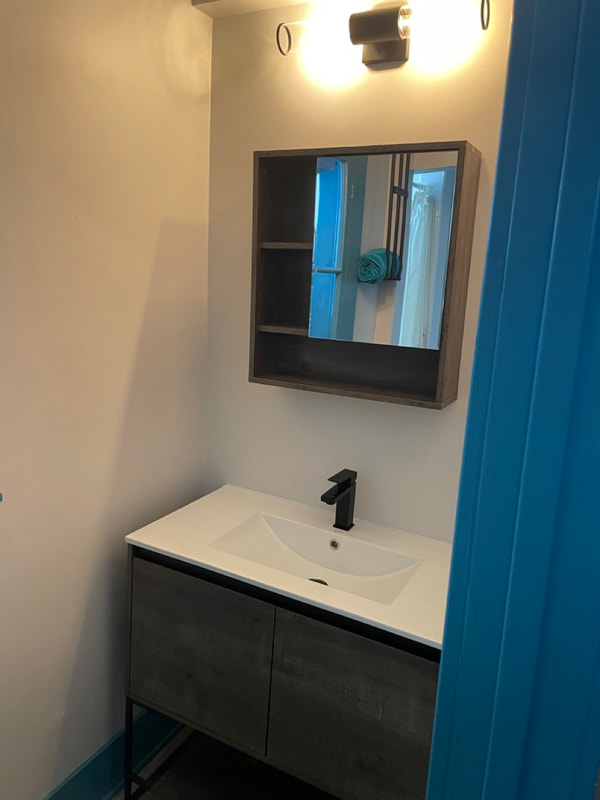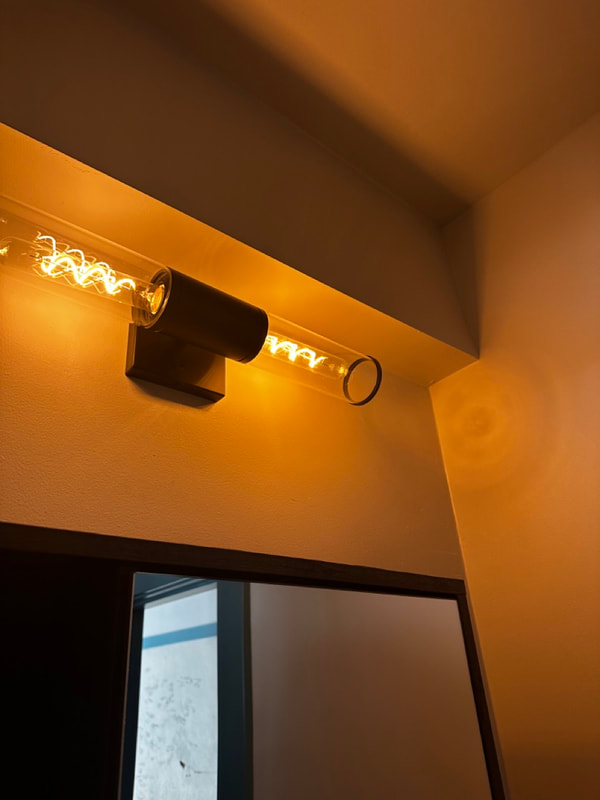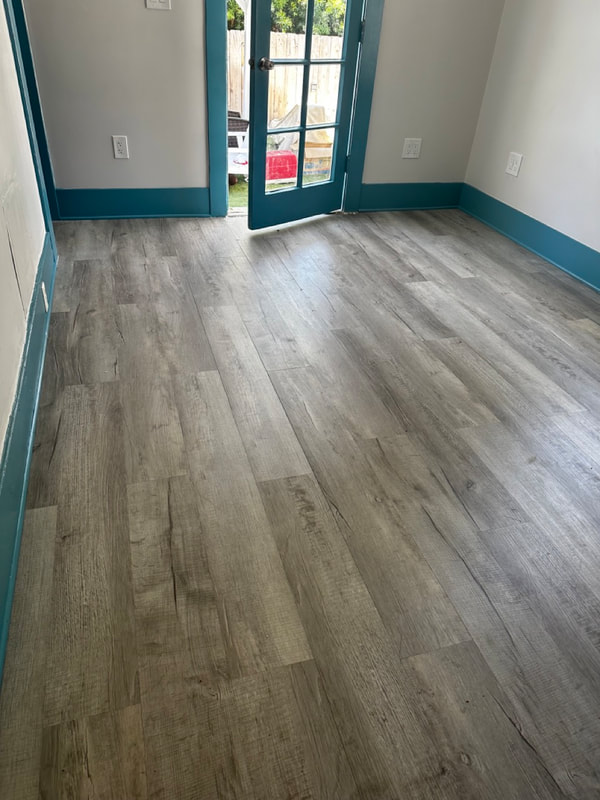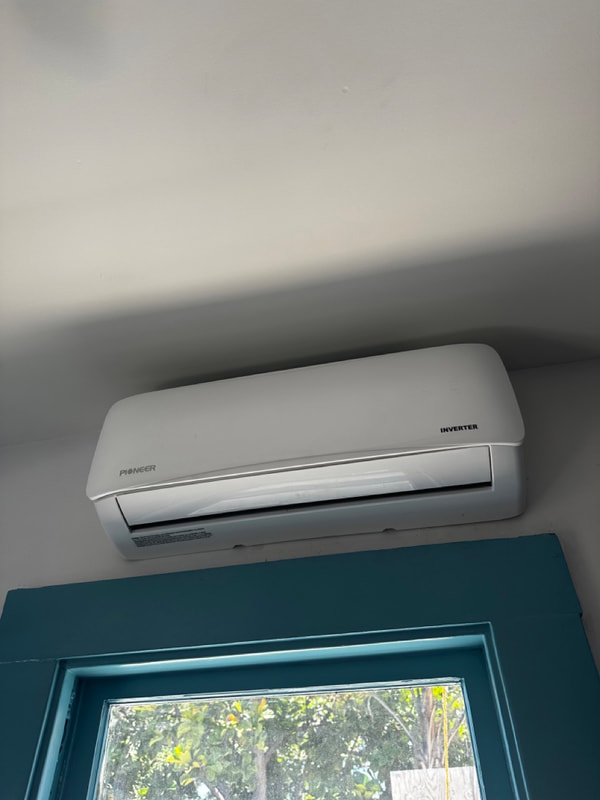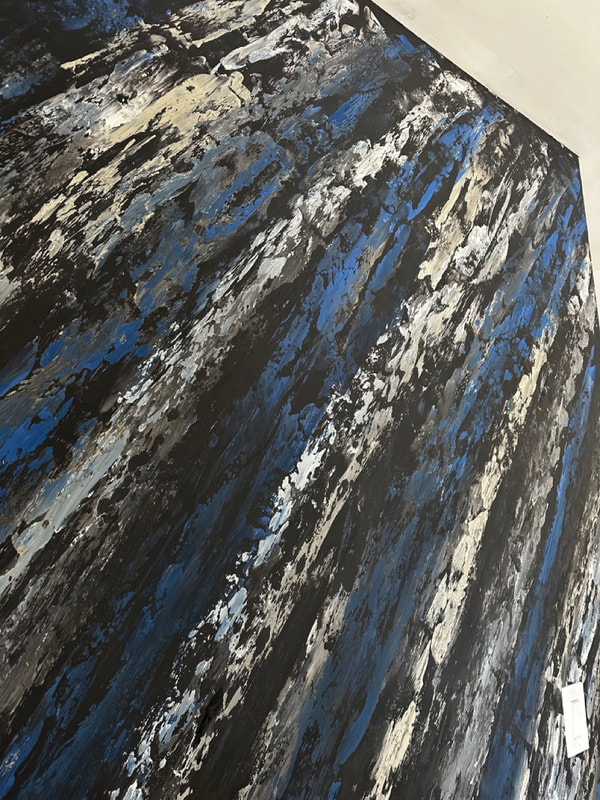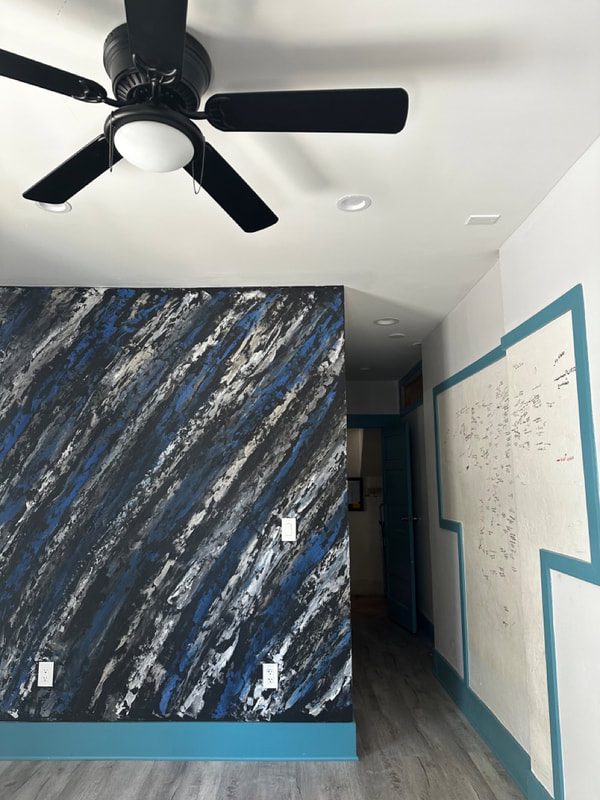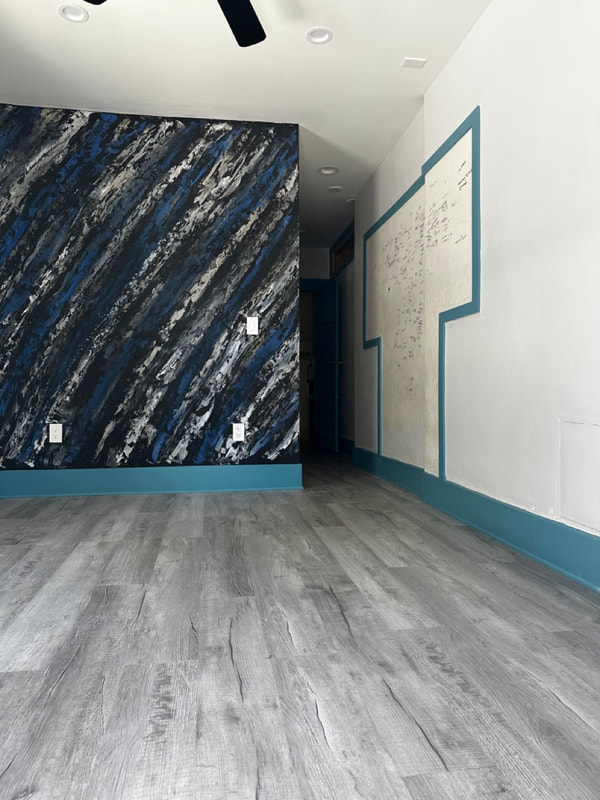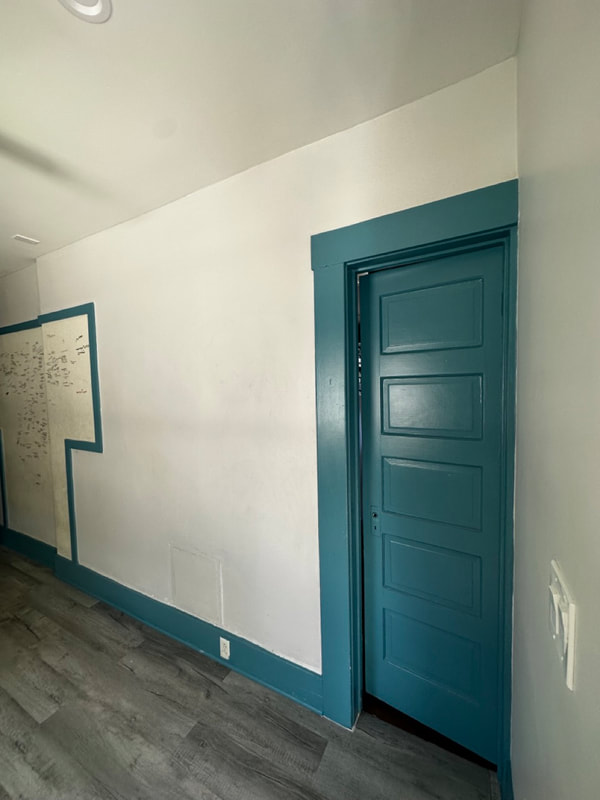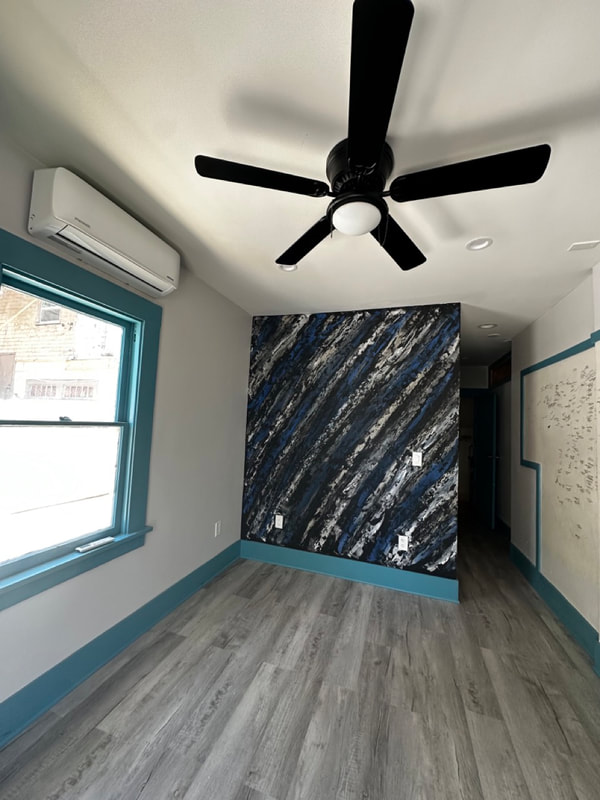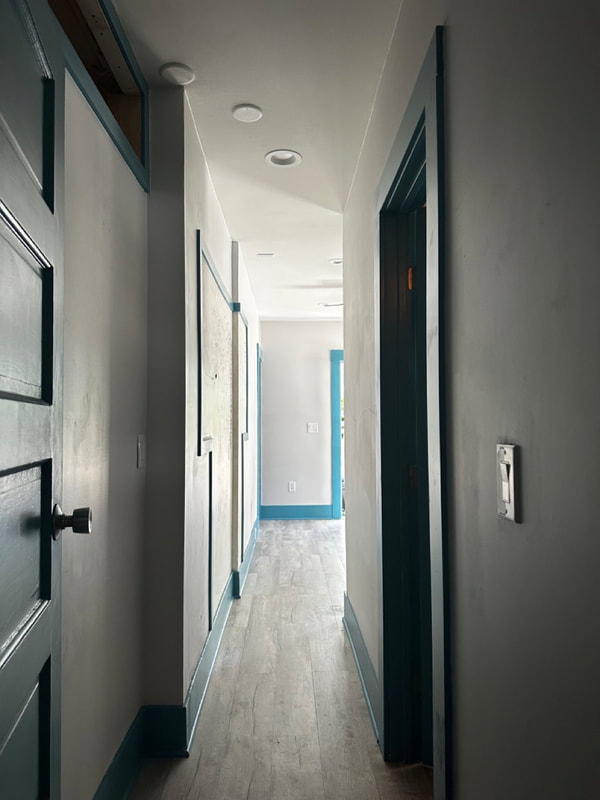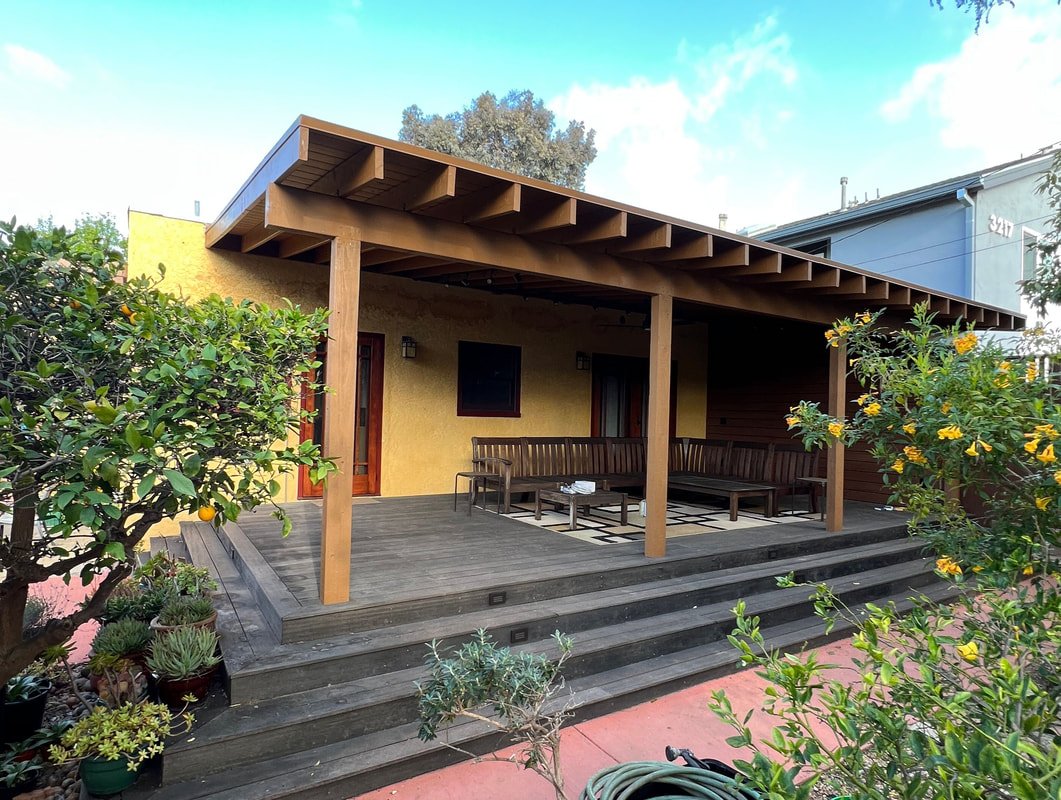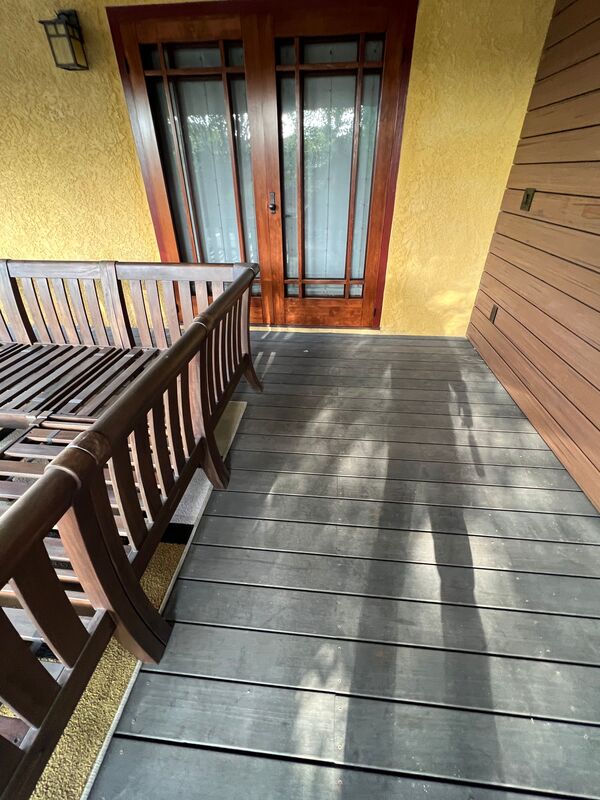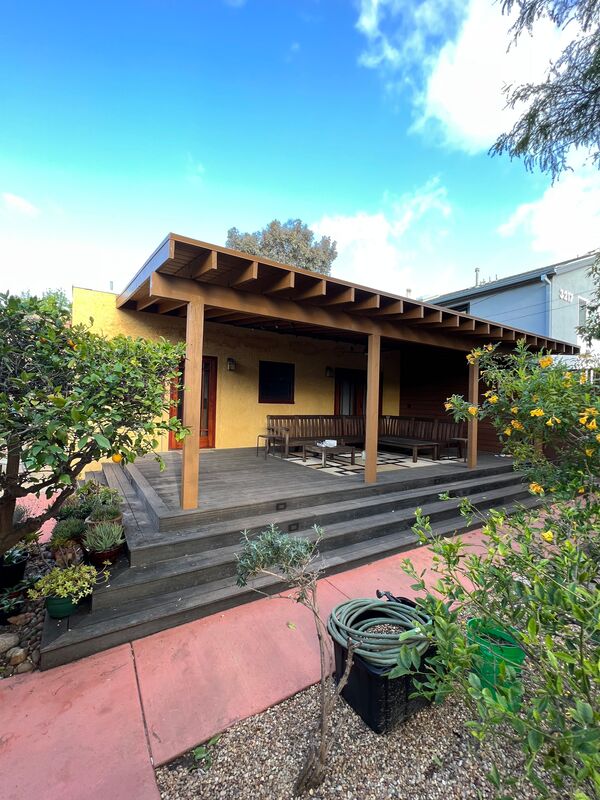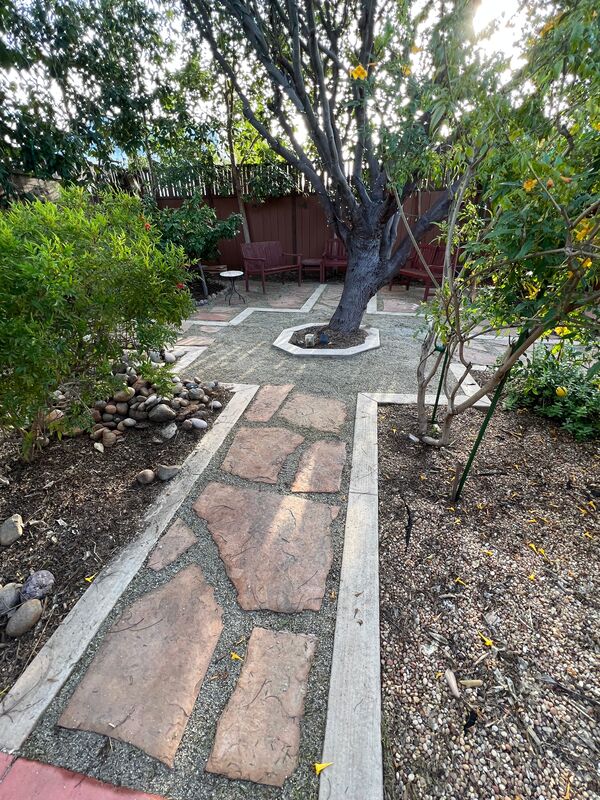The Berkley Construction team recently completed painting the exterior of this beautiful home in South Park. Along with fresh paint, the project included repairing and replacing damaged wood and waterproofing the exterior. The team also sealed the balconies to make them weather safe and reengineered the front wood fence.
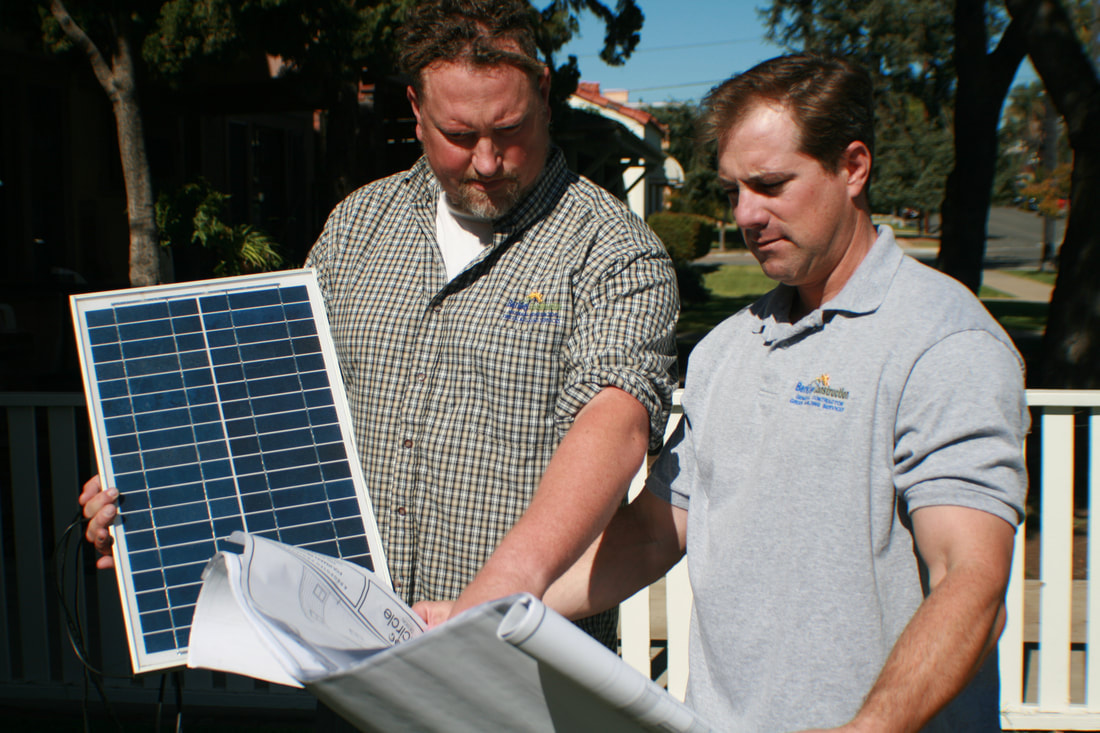 Sustainability is an idea that's hot on the minds of most consumers, but how do you make it a reality? From the gorgeous natural materials you can use to native plant life and purposeful building, there's a lot to consider when you're starting out. These are the top things to know about sustainable building, why it matters, and what you can do to make your project successful. Why Sustainability Matters Sustainability is one of the most important parts of living a forward-thinking life. Not only does it protect the Earth for future generations, but it also gives you the opportunity to add value to your home. Building sustainably creates a property that does far less damage than the average construction project. This means sourcing your materials intelligently, investing in workers who understand green building, and following strict rules for trash and recycling on a construction project. This might be more expensive upfront and take a little longer to build, but it's important to undertake. The higher return on investment, higher customer interest, and giving back to the environment make it all worth it. Exploring Sustainable Options In our pursuit of more sustainable construction practices, it's vital to consider alternative materials. Recycled options like reclaimed wood and recycled concrete not only benefit the environment but also add unique textures to projects. Renewable resources such as bamboo and cork provide strength and insulation, reducing our dependence on finite resources. Engineered materials like cross-laminated timber and fiber-reinforced polymers offer durability while using fewer raw materials. Bio-based alternatives such as mycelium and algae-based bioplastics offer innovative solutions for insulation, packaging, and structural components. In interior design, demountable glass partitions present an eco-friendly choice. These partitions offer flexibility and maximize natural light, reducing the need for artificial lighting and enhancing energy efficiency. By embracing these sustainable options, builders can create structures that are both environmentally conscious and economically viable, leading the way to a more sustainable future in construction. The Role of Green Technologies Green technologies play a crucial role not only in sustainability but also in addressing specific challenges such as construction dust control. Green technologies encompass a variety of innovations aimed at reducing environmental impact and improving efficiency in building practices. From renewable energy sources to eco-friendly materials and advanced construction techniques, these technologies offer solutions to cut down on carbon emissions, conserve resources, and effectively manage construction dust throughout the building lifecycle. By integrating green technologies into construction projects, stakeholders can decrease energy usage, minimize waste, and enhance building durability and occupant comfort while addressing concerns like construction dust control. Embracing these sustainable practices is essential for creating infrastructure that meets the needs of both present and future generations. Challenges and Opportunities There will be countless challenges along the way. The first is the budget. If you don't budget intelligently as far out as possible, you might find yourself overspending and breaking the bank on this project. Thankfully, there are some grants and support for companies that want to build greener, so if budgeting isn't enough, there are other options. Don't be nervous about trying newer but proven technology! Green roofing solutions like slate are sturdy, can last over sixty years with good maintenance, and look incredible. Most sustainable product companies are thoroughly tested, so read reviews and don’t be afraid to ask about any warranty they may offer. Looking to the Future Even the most energy-efficient buildings today will be out of date in fifteen to twenty years. Every step along the path of building these businesses is taken while thinking about what it does for others around it, but it's okay to know that your building will have to be updated over time. The problem with many future-thinking buildings of the 1990s was that they didn't think more than ten years out. Building areas that include indoor trees but not enough room for the roots to grow or considering that the tree might outgrow this common area quickly was one issue, but permanently building in technology was another. Avoid building any technology, like a smart thermostat, smart switches, or more permanently into the building in a way that's hard to remove. Otherwise, these will be markers of the building's age over time and will end up looking at how 1990s intercom systems look in buildings today. 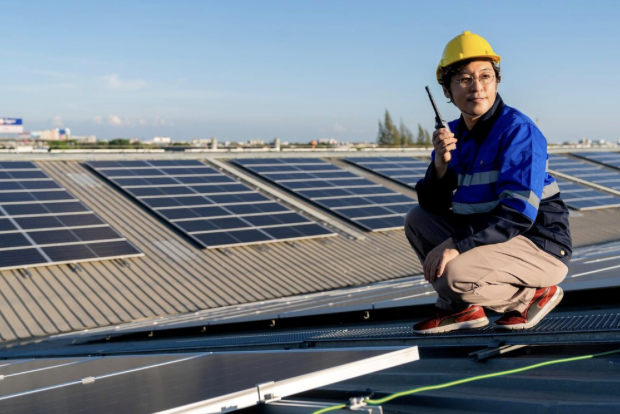 Tomorrow is Our Responsiblity The future is still in our hands! If you're ready to lead the way, consider following these tips, and contact Berkley Construction for more ideas and inspiration. **************************** Author Bio Brian Jeffries is a freelance writer who loves sharing his knowledge and expertise on construction projects and materials. He lives in Winter Park, Florida where he enjoys spending time with his wife and working on projects in his spare time. Brian’s work as a freelance writer can be found on Building Product Advisor, a construction industry resource site. The Berkley Construction crew just completed a beautiful, custom built chicken coop in South Park, San Diego. The three story coop features multiple barn yard style doors designed to keep predators out, while giving the owners easy access to fresh eggs. The white side paneling and top story deck matches the style of the owner's home. The finishing touch includes solar lights to create a warm glow at night. View more pictures of this custom chicken coop, and the process below.
Dreaming of a home that not only looks stunning but also provides comfort and convenience? Then it is likely that you will need to perform some sort of home renovation to make this dream a reality. Home renovation projects can be daunting, but with the right approach, you can create a space that meets your needs and desires. In this blog post, we'll explore seven crucial tips to ensure your home renovation project is a resounding success. Whether you're looking to revamp a single room or embark on a whole-house makeover, keep reading as we guide you on your journey to a dream home. 1. Be Meticulous with Planning Failing to plan is planning to fail, especially when it comes to home renovations. Detailed planning is the bedrock of a successful project. Begin by clearly defining your objectives and priorities. What do you want to achieve with this renovation? Is it enhanced functionality, aesthetic appeal, or both? Once your goals are set, create a comprehensive budget and timeline. Be sure to factor in costs for materials, permits, and unexpected expenses. Industry professionals recommend having an additional 20% saved on top of expected costs to be ready to tackle unexpected expenses in stride. Planning a renovation project also involves keeping the property in top condition to allow for efficient work. When it comes to managing waste during the renovation, consider renting a residential dumpster. Having a dedicated dumpster on-site makes waste disposal efficient and organized. It also ensures proper waste management and keeps your renovation area clean and safe. 2. Find Trends that Have Staying Power While home renovations should reflect your personal taste, it's wise to be mindful of trends that have staying power. Certain trends may capture your attention but quickly fade, leaving your home looking outdated. Focus on timeless design elements and materials that will stand the test of time. Remember, classic and elegant choices often prove to be the most rewarding in the long run. 3. Have Alternate Living Arrangements Mapped Out During extensive home renovations, living in your current space can be impractical and even unsafe. Plan for alternative living arrangements well in advance. This could involve temporarily relocating to a rental, staying with family, or utilizing a separate area within your home if possible. Having a comfortable and accessible place to reside during the renovation period is essential for your well-being and the success of the project. 4. Prioritize Projects that Lower Maintenance Requirements Smart home renovations go beyond aesthetics; they should also aim to reduce maintenance requirements in the long run. Consider projects that will save you time, effort, and money down the line. For instance, installing permeable pavers for your driveway or outdoor pathways can minimize the need for constant cleaning and sealing. They allow rainwater to filter naturally through the ground, reducing runoff and puddles. Opting for low-maintenance materials and finishes throughout your home can significantly ease the burden of upkeep and preserve its beauty for years to come. 5. Find Projects that Balance Form and Functionality The key to a successful home renovation is striking a delicate balance between form and functionality. While aesthetic appeal is important, it should never come at the expense of practicality. As such, look for projects that enhance both the visual appeal and the livability of your space. For instance, installing a rain chain as a stylish alternative to a traditional downspout not only adds a touch of elegance but also efficiently channels rainwater away from your home's foundation. What is a rain chain? It is a series of decorative cups or shapes chained together, which guide rainwater from your roof gutters down to the ground. As it rains, the water cascades down the chain to create a beautiful waterfall effect while efficiently transporting runoff away from your home. 6. Coordinate Curb Appeal Don't underestimate the power of curb appeal. The exterior of your home is what creates that crucial first impression, so it deserves just as much attention as the interior. Enhance your home's curb appeal by considering factors like exterior house colors, landscaping, and the overall harmony of the design. A well-coordinated exterior not only boosts the property's value but also sets the tone for the inviting and welcoming space that lies within. 7. Know Your Limits as a DIYer
While do-it-yourself projects can be rewarding, it's crucial to recognize your limitations as a DIYer. Some tasks, such as electrical work or structural modifications, require professional expertise to ensure safety and compliance with building codes. Know when to seek the assistance of qualified contractors or professionals. Engaging their services can prevent costly mistakes, maintain the project's timeline, and guarantee the highest quality of workmanship. Make Your Next Renovation Project a Success Home renovations are a transformative journey that requires careful planning and thoughtful execution. By following these smart tips, you can elevate your space and create a home that not only looks stunning but also serves your needs and enhances your quality of life. Whether you're planning a minor upgrade or a comprehensive makeover, remember that attention to detail, strategic decision-making, and a balance between form and functionality are key to achieving a successful home renovation. For more insights on the latest renovation trends shaping southern California, contact Berkley Construction. ******************************* Author Bio Brian Jeffries is a freelance writer who loves sharing his knowledge and expertise on construction projects and materials. He lives in Winter Park, Florida where he enjoys spending time with his wife and working on projects in his spare time. Brian’s work as a freelance writer can be found on Building Product Advisor, a construction industry resource site. Your home's exterior should be a paradise! Unfortunately, many homeowners don't get to fully use their lawn, and it simply becomes a chore. Fight back against this by creating a property that feels welcoming and looks beautiful. Whether you're trying to sell or you're upgrading for yourself, there's so much you can do to make your home's exterior feel brand new! Consider following some of these tips to upgrade your outdoor living space. 1. Add Exterior Entrainment Space Entertainment space is a must regardless of whether you want to host a huge gathering or just grill with your close family. This could mean adding a deck, or you might simply add a patio that has room for a couple of chairs. One of the main reasons people don't fully utilize their lawns is because they don't feel like there's a reason to be outside. If you treat this like you would any room within your home, you'll be inspired to spend so much more time outdoors. Make sure to add safety precautions like deck railing to keep everyone as comfortable as possible. 2. Boost Your Plant Life Plant life and greenery are a must in any home exterior. It's a good idea to aim for using native plant life that needs as little care as possible in the environment you live in. These are plants that are used to the local weather and can handle whatever rain patterns you deal with. This is a huge relief to some who hate mowing every week or throwing hundreds a month into watering their properties. 3. Invest in Outdoor Lighting Outdoor lighting is an awesome way to add value to your property while also boosting how much time you can spend outside. Not only does it show off all of the hard work you put into upgrading the exterior of your home, but it also puts a spotlight on it to keep out any thieves or people who might try to break in. Outdoor lighting is a very affordable way to boost your property’s value and curb appeal, and there are even solar options that can keep you from throwing more money into lighting. 4. Consider an Outdoor Kitchen Outdoor kitchens are an overlooked idea that should be part of every home. Whether you want it under the open sky or you want an outdoor covered kitchen so you can cook in all weather, this is an incredible way to utilize any space. This upgrade can be accomplished easily with an outdoor-graded fridge, stove and oven, sink, and even a microwave if you're interested in that. Placing it in an outdoor bar will make your backyard feel like you've been transported to another place entirely. There's nothing better than inviting people over for a burger you made in the great outdoors. 5. Avoid Flooding or Water Damage Flooding and water damage can be any property's downfall if you're not careful! Instead of letting it ruin your home, take the time to plan ahead with landscape drainage grates, native plants that can pull the water deep into the soil, and keeping an eye on water levels. If you notice your lawn floods every time it rains, it's vital that you take care of this before completing any other upgrades on this list. 6. Look at Comparables Check out other homes in your area. This feels obvious, but many people forget they can look for inspiration in their neighborhood. Are there properties around you that speak to your personal taste? If there is, how could you accomplish that for your own property? Sometimes, it takes looking at other properties for you to realize what you do or don't like. Over time, you'll be able to make decisions without viewing these similar homes. 7. Consider What Lawn Is Best for You Although live green grass is what most people have had for the last hundred years, there's been a large shift away from that in recent years. Not only is it expensive to water all of that grass, but it's being forced into environments where it's not built to survive. A large number of people are reaching out for artificial turf. This looks incredible, can last for over twenty years, and will leave your property feeling complete and fresh year-round. Your Property Can Have an Instant Glow Up Although some areas of your home can take weeks and tens of thousands of dollars to upgrade and make them unique, your home's exterior can be an easier fix! Contact us to get started on your exterior home remodel. ************************************** Author Bio Brian Jeffries is a freelance writer who loves sharing his knowledge and expertise on construction projects and materials. He lives in Winter Park, Florida where he enjoys spending time with his wife and working on projects in his spare time. Brian’s work as a freelance writer can be found on Building Product Advisor, a construction industry resource site. 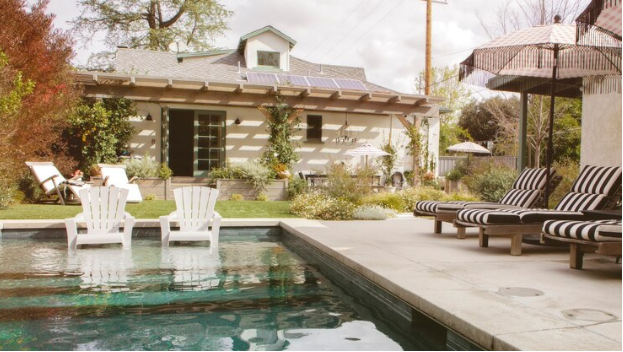 Bonus rooms are expected to be one of the most popular home changes in 2024! The price of real estate continues to skyrocket, so people are forced to buy smaller than they really want. Building an addition onto your home can add value, give you a space to relax and feel at home, and is far more affordable than buying a larger property. These are the top things to consider before building your bonus room and why it's a great idea for most homeowners. Why Build a Bonus Room? Adding an additional room to your home can increase your property's value from ten to twenty percent! This is a huge boost in the current market and something many people are seeking out. A bonus room will also give you more room if your property doesn't currently have any. Since a large portion of home buyers are having to buy more land than they need, there's a growing desperation for more space. Building a bonus room can also be a great way to create a home office, a family room, a four seasons room, and so much more. This can be a great area to boost your lifestyle into something more comfortable. How Long Does This Process Take? There's no easy and short process when it comes to adding 10% to your home's value. Countless decisions await you, from how large you want the room to be to whether you're going to update the entire home to match the dark vinyl siding colors of this bonus space. Creating your own addition can take between ten to twenty weeks, including the demotion of an exterior wall and all building and renovating necessary. The time it takes will vary based on what type of room you're building, whether you DIY or hire professionals, and what process, materials, and shape you make the room into. How Can You Make Your Bonus Room Better? Bonus rooms are often less insulated than the rest of the home, but you have the chance to make sure that doesn’t happen to yours. Taking steps like adding soundproofing panels, connecting your HVAC system to the room, and insulating as thoroughly as possible will all allow your space to feel like a natural extension of your home. It’s also important to ensure the room doesn’t feel like it was slapped onto the building. The main goal should be to create a space that feels as seamlessly incorporated into your house as possible. Fun Touches of Luxury Luxury will always elevate a room. This doesn't mean you need to decorate with gold and diamonds, but instead, adding touches like heated floors, smart lights and window shades, and other little things that will make the room feel more welcoming. Some take this as a chance to create their dream bedroom, with an extensive bathroom and his and hers closet, but this is obviously a costly and time-consuming build. Easy Mistakes to Avoid
There are countless ways to make this project a success, from using shiplap ceiling instead of popcorn or including more window space for views, but there are also dozens of mistakes you could make. One of the biggest mistakes is trying to start this project without setting a real budget. Even if you’re independently wealthy, having a budget will save you from making a big mistake or being taken advantage of. Similar to that first mistake, some neglect to set a schedule for when construction should be completed. A good timeline will make you budget how long you work on this, and save you from working for years on a three-month project. The final mistake, and often the most expensive one, is starting construction before talking to your HOA. Not getting permission to complete this work or ensuring you're in the right zoning for it could cost you thousands in fees. A Bonus Room Could Change Everything Whether you’re considering a bonus room so you can sell your home for more, or you’re interested in adding more comfortable space for yourself and your family, there are countless reasons people build. Contact the Berkley Construction team to make this dream closer to a reality for your home! ************************************** Author Bio Brian Jeffries is a freelance writer who loves sharing his knowledge and expertise on construction projects and materials. He lives in Winter Park, Florida where he enjoys spending time with his wife and working on projects in his spare time. Brian’s work as a freelance writer can be found on Building Product Advisor, a construction industry resource site. If you're a San Diego homeowner, you're already aware of the competitive real estate market. To stand out and increase your home's value, it's essential to consider strategic construction projects that not only enhance your living space but also appeal to potential buyers. Here are seven of the best construction projects to boost your home value in San Diego. 1. Kitchen Remodel: The kitchen is often the heart of the home, and a well-executed kitchen remodel can yield a high return on investment. Opt for modern appliances, granite or quartz countertops, and stylish cabinetry. Open floor plans are also popular in San Diego, so if possible, consider knocking down walls to create a more spacious, open kitchen layout. 2. Outdoor Living Spaces: San Diego is the perfect place to enjoy the outdoors year-round. Investing in an outdoor living space can significantly increase your home's value. Consider building a deck, patio, or a well-designed backyard oasis with landscaping, seating areas, and even a fire pit. These additions create an attractive extension of your home and provide the ideal setting for relaxation and entertainment. 3. Bathroom Upgrades:
Bathroom upgrades are another key area where investing can pay off. Consider updating the fixtures, tiles, and vanities to create a spa-like atmosphere. Adding a walk-in shower or a soaking tub can be particularly appealing to potential buyers. 4. Energy-Efficient Upgrades: San Diego residents are increasingly conscious of their environmental impact, and energy-efficient upgrades can be a selling point. Invest in solar panels, LED lighting, energy-efficient windows, and a programmable thermostat. These improvements can not only reduce your utility bills but also make your home more attractive to eco-conscious buyers. 5. Accessory Dwelling Units (ADUs): Accessory Dwelling Units, or ADUs, have become increasingly popular in San Diego due to changes in zoning regulations. Building an ADU on your property can provide additional rental income or serve as a guesthouse. This can be a significant selling point, especially for multi-generational families or those looking to offset their mortgage. 6. Curb Appeal: First impressions matter, so don't underestimate the value of enhancing your home's curb appeal. Invest in landscaping, repaint the exterior, and update the front door and windows. A well-maintained and visually appealing exterior can make your property more enticing to potential buyers. 7. Room Additions: If your home has the space, consider adding an extra bedroom or a home office. With remote work becoming increasingly common, a dedicated workspace can be a significant selling point. Increasing your home's value in San Diego involves thoughtful planning and investment in strategic construction projects. Whether you're preparing to sell or simply want to improve your living space, these projects can enhance both your home's appeal and its resale value. Contact Berkley Construction to get started on your next construction project. Brighten and Protect your shower or tub with our 2-Day Shower Tune up service.
Tile and grout should be sealed annually to prolong the longevity and keep your tile looking clean and hygienic. Our Shower Steam Clean and Sealing service includes deep cleaning and sealing all tile and grout + chemical descaling. $525 for most showers, $225 for tub surround. Add floor tile for $150. Ready to make your bathroom feel brand-new? Contact us to schedule your appointment. The Berkley Construction team just completed a room "makeover" and bathroom remodel for a historic home in South Park. The family moved into the home 18 years ago, and the small room addition and tiny bathroom remained unchanged until now.
The team started by knocking out a wall in the hallway in order to double the size of the bathroom. This allowed room for a new vanity and light fixtures. In the bedroom, they added new vinyl plank flooring, outlets, ceiling fan and a mini-split air conditioner. The team also added a fresh coat of paint to the walls, windows and floor boards, but reserved part of the original wall where family and friends have measured themselves and growing children over the years. The final touch was a custom painted wall, giving the room an overall more modern and sophisticated look! Find more pictures of the new room and bathroom below. Another summer is coming, which is why more San Diego homeowners are asking the Berkley Construction team to upgrade their decks and backyards for more outdoor living space and updated entertainment features.
This backyard upgrade project included new covered trellis with lighting, fans, decorative trex wall and seating. 6 new custom wood screen doors were added, along with repairing some existing wood, structural repair of the fireplace, and painting existing windows. New outdoor internet connectivity was added along with step lights to the existing deck. In the garden area, the team added new flagstone paver pathways and a 95’ colored concrete stem wall to support new 6’ tall trex horizontal fencing. Open trellis with stainless steel cable was added for vines and minor plumbing was done to include trenching for an additional hose bib. Finally, a new decomposed granite with stabilizer in the seating area was added to give the whole backyard an updated, more modern feel. |
|








